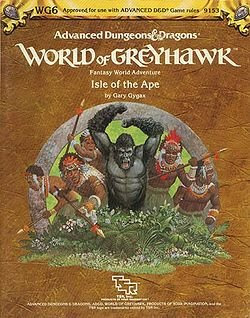We say that, but ...
1. Several classes had capped level limits that were well above 9th level. Druid (14), Assassin (15), and Monk (17) all indicated that those hard caps were supposed to be meaningful, and all were well above 9th level.
2. Weird class abilities- such as the Fighter multi-attack. You didn't get the 2/1 until level 13 (Paladin & Fighter) or 15 (Ranger).
3. The existence of those insane spell tables ... the Cleric spell tavle went up to level 29, and there were no level 7 spells until level 16; the Illusionist went to level 26 and you didn't get level 7 spells until 14; and the MU table went to ... checking again ... squints ... LEVEL 29! And you didn't get those precious, game-destroying 9th level spells until level 18.
4. The occasional letter to Dragon Magazine, as well as the existence of Deities and Demigods and Q1, seemed to indicate that some people didn't just build strongholds, unless they did so ON ORCUS'S BONES.


